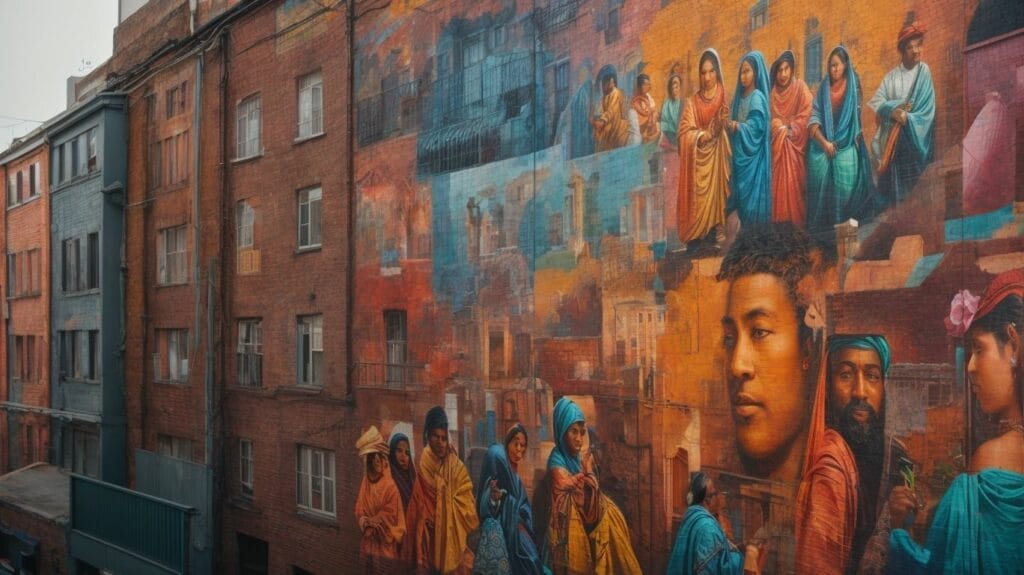Hashtags have become an integral part of our digital communication, playing a significant role in organizing and categorizing content on social media platforms. Understanding the origins and impact of hashtags can provide insights into their significance in today’s social media culture. In this article, we will delve into the creation of the hashtag and its evolution over time.
Firstly, let’s define what a hashtag is. A hashtag is a word or phrase preceded by the pound or hash symbol (#) used on social media platforms to identify and filter content related to a specific topic or theme. Hashtags enable users to discover and engage with relevant content and join in discussions on various subjects.
Hashtags have grown exponentially, becoming immensely popular on social media platforms like Twitter, Instagram, and Facebook. They are crucial in organizing information and facilitating conversations around trending topics, events, and interests. Examples of popular hashtags include #ThrowbackThursday, #MondayMotivation, or #BlackLivesMatter, to name a few.
But who is responsible for creating the hashtag? The birth of the hashtag symbol can be traced back to the early days of Twitter. It was first introduced by Twitter user Chris Messina in 2007. Messina proposed using the pound symbol for group discussions to make it easier for users to find and follow specific topics.
Since then, hashtags have evolved and are widely adopted across various social media platforms. They have contributed to the formation of online communities, served as a means of expression and mobilization, and even sparked global movements.
Looking ahead, the future of hashtags holds intriguing possibilities. Trends and innovations in hashtag usage continue to emerge, with new features and functionalities being introduced by social media platforms. The culture surrounding hashtags is constantly evolving, and the way we use them may change as well.
In this article, we will explore the impact of hashtags on social media culture, their role as tools for information organization, and as a means of expression and mobilization. We will also discuss potential developments and changes we might witness in the world of hashtags.
By delving into the history and significance of hashtags, we can gain a deeper understanding of their role in shaping our digital landscape and how they will continue to evolve.
Key takeaways:
- The birth of the hashtag symbol: The hashtag symbol () was first introduced in 2007 by Chris Messina, a social media expert. Messina proposed the use of hashtags as a way to categorize and organize online conversations.
- Chris Messina’s role in hashtag creation: Chris Messina is credited with popularizing hashtags on Twitter and other social media platforms. His suggestion gained traction, and hashtags quickly became a widely adopted organizing tool.
- The evolution and adoption of hashtags: Since their introduction, hashtags have expanded to various social media platforms. They have become integral to social media culture, allowing users to express themselves, join movements, and search for specific topics of interest.
What is a Hashtag?

Photo Credits: Jetsetcreators.Com by Sean Nelson
A hashtag is a word or phrase preceded by the # symbol used on social media to categorize and organize content. It allows users to search for specific topics and join in conversations easily. Hashtags originated on Twitter in 2007 but have since been adopted by other platforms like Instagram and Facebook. They have become an integral part of online communication and marketing strategies, enabling content to reach a wider audience. By using hashtags, individuals and businesses can increase their visibility, engage with others, and promote their messages effectively. Hashtags simplify content discovery and facilitate online interactions.
Usage and Popularity of Hashtags

Photo Credits: Jetsetcreators.Com by Ethan Nelson
The usage and popularity of hashtags have become seamlessly integrated into the fabric of social media platforms. Hashtags not only allow users to categorize and search for specific topics or trends conveniently, but they also serve the purpose of making it easier to discover relevant content. Due to their effectiveness, hashtags have been widely embraced by individuals, businesses, and influencers alike, as they provide an excellent opportunity to increase engagement and expand their reach to a wider audience. Additionally, hashtags are vital in establishing and nurturing online communities, fostering conversations centered around specific themes. To fully harness the power of hashtags, it is crucial to employ relevant and trending tags, closely monitor their performance, and actively engage with users who interact with these hashtags. Ultimately, hashtags are potent tools to enhance visibility and foster connections in the vast digital realm. Hence, it becomes imperative to hashtag wisely and forge meaningful connections with the world!
How are Hashtags Used on Social Media Platforms?
- Hashtags are a common feature on social media platforms, used for various purposes. Here are some ways they are used:
- Categorization: Hashtags help organize content and make it easily searchable. Users can add relevant hashtags to their posts, allowing others to find similar content.
- Trending topics: Social media platforms often display trending hashtags to show popular or widely discussed topics. Users can join conversations by using these hashtags in their posts.
- Campaigns and promotions: Brands and individuals can create unique hashtags to promote their products, events, or causes. This helps generate buzz and encourages user engagement.
- Crowdsourcing: Hashtags can crowdsource information or opinions on a particular topic. Users can use a specific hashtag to submit ideas or share their experiences.
Using hashtags on social media began in 2007, with Chris Messina suggesting the idea. Initially, hashtags were primarily used on Twitter but gained popularity across other platforms due to their effectiveness in organizing and categorizing content. Today, hashtags are an integral part of social media culture, enabling users to connect, engage, and discover relevant content easily.
Examples of Popular Hashtags
- #ThrowbackThursday: Examples of Popular Hashtags are widely used on social media platforms to categorize content and make it more discoverable. I used to share nostalgic photos or memories on Thursdays.
- #Foodie: Used for posts related to food and dining experiences.
- #OOTD stands for “Outfit of the Day,” commonly used in fashion and style posts.
- #Travelgram: Used to showcase travel photos and experiences.
- #MotivationMonday: Used to share inspirational quotes or messages at the beginning of the week.
True story: A small business recently used the #ShopLocal hashtag to promote its products on social media. This resulted in increased visibility and support from the local community, leading to a boost in sales. Hashtags can be powerful tools for connecting with a target audience and generating engagement.
Who Created the Hashtag?

Photo Credits: Jetsetcreators.Com by Lawrence Nelson
Are you curious about the origins of the hashtag symbol? Let’s dive into its fascinating story, exploring its birth, the pivotal role played by Chris Messina, and the evolution and widespread adoption of this powerful social media phenomenon. Uncover the intriguing facts and surprising twists behind the creation of the hashtag and gain a deeper understanding of how it has shaped how we communicate online. Get ready to unravel the mysteries and uncover the truth about who truly created the hashtag!
The Birth of the Hashtag Symbol
The hashtag symbol, also known as “The Birth of the Hashtag Symbol,” can be traced back to August 23, 2007, when Chris Messina, a social technology expert, proposed its use in a tweet. He suggested using the pound sign (#) to group conversations and topics on Twitter. Initially, the idea of The Birth of the Hashtag Symbol was met with skepticism, but it quickly gained popularity as users realized its potential for organizing and categorizing content. Today, The Birth of the Hashtag Symbol has become a ubiquitous feature of social media platforms, allowing users to follow and engage with specific themes, events, and discussions. The Birth of the Hashtag Symbol revolutionized social media culture, giving users a powerful tool for information organization and expression.
The Role of Chris Messina
Chris Messina played a pivotal role in the creation and popularization of the hashtag. As a social media expert, Messina proposed using the pound sign (#) to group related topics on Twitter. His suggestion, which demonstrated The Role of Chris Messina, was initially met with skepticism, but it quickly caught on and became a widespread practice. Messina’s innovation revolutionized how information is organized and shared on social media platforms. Today, hashtags are used not only to categorize content but also as a means of expression and mobilization. Thanks to The Role of Chris Messina, hashtags have become an integral part of social media culture.
Evolution and Adoption of the Hashtag
The evolution and adoption of hashtags have completely transformed how we communicate and organize information on social media platforms. Created by Chris Messina in 2007, the hashtag has gained widespread popularity and has become an indispensable element of social media culture. It allows users to categorize and search for content, simplifying the process of finding relevant discussions and connecting with like-minded individuals. Additionally, hashtags have evolved to serve as a means of expression and mobilization, empowering movements and enabling important conversations to gain traction. As social media advances, hashtags are anticipated to play an increasingly crucial role in how we consume and engage with online content.
Pro-tip: When using hashtags, it is crucial to strategically select relevant ones that resonate with your target audience to maximize engagement and reach.
Impact of Hashtags on Social Media Culture

Photo Credits: Jetsetcreators.Com by Ethan Scott
Hashtags have become an integral part of our social media culture, leaving a significant impact on how we connect and engage with online content. In this section, we’ll dive into the dynamic role of hashtags and explore their dual nature. From acting as efficient tools for organizing information to becoming powerful means of expression and mobilization, we’ll uncover the multifaceted influence that hashtags hold in shaping our digital narrative. Get ready to explore how these small yet mighty symbols have revolutionized social media as we know it.
Hashtags as a Tool for Information Organization
Hashtags as a Tool for Information Organization
Hashtags play a critical role in organizing information on social media platforms. They serve as a valuable tool for categorizing and grouping related content, thereby simplifying the search process for users. Let’s explore how hashtags are utilized as a means of information organization.
- Event-specific hashtags: Organizations employ event-specific hashtags to compile all relevant posts and updates in a single location.
- Topic-based hashtags: Users can effortlessly find specific topics or interests using hashtags associated with those subjects.
- Trending hashtags: Popular and extensively used hashtags can indicate current trending topics or discussions.
- Hashtag campaigns: Brands and organizations use specific hashtags to collect user-generated content related to their campaigns.
Incorporating hashtags as a tool for information organization assists in streamlining content and enhancing the overall user experience on social media platforms. It enables users to navigate and discover pertinent content easily easily. To maximize the benefits of hashtags for information organization, consider the following suggestions:
- Use relevant and specific hashtags to ensure your content reaches the intended audience.
- Stay updated on trending topics and engage in relevant conversations by monitoring popular hashtags.
- Encourage user participation and gather user-generated content by creating unique hashtags for campaigns or events.
- Analyze the performance of hashtags to refine your content strategy and maximize your reach.
Hashtags as a Means of Expression and Mobilization
- Hashtags, as a Means of Expression and Mobilization, have become a powerful tool on social media platforms. They allow users to connect and engage with others who share similar interests or concerns.
- Creating awareness: Hashtags as a Means of Expression and Mobilization help spread awareness about social issues, political movements, or humanitarian causes. Examples include #BlackLivesMatter, #MeToo, and #ClimateAction.
- Mobilizing communities: Hashtags as a Means of Expression and Mobilization are used to mobilize communities for events, protests, or rallies. They serve as rallying cries, bringing people together for a common purpose. Examples include #WomensMarch and #MarchForOurLives.
- Fostering conversation: Hashtags, as a Means of Expression and Mobilization, provide a platform for discussions and conversations around specific topics. They enable individuals to share their thoughts, experiences, and opinions. Examples include #LoveIsLove and #BeKind.
- Supporting campaigns: Hashtags as a Means of Expression and Mobilization are often utilized to support fundraising campaigns, charity initiatives, or awareness campaigns. They help generate participation and engagement. Examples include #IceBucketChallenge and #Movember.
By using Hashtags as a Means of Expression and Mobilization, individuals and communities can amplify their voices and create meaningful change.
For more information on who created hashtags, visit the article on CNBC.com.
The Future of Hashtags

Photo Credits: Jetsetcreators.Com by Jason Wilson
Hashtags have become an integral part of our online culture, but have you ever wondered what the future holds for this digital symbol? In this section, we’ll explore the exciting possibilities and potential transformations of hashtags. From exploring the latest trends and innovations in their usage to speculating on the possible developments and changes in hashtag culture, we’ll uncover the road ahead for this ubiquitous digital tool. Get ready to dive into a world where hashtags continue to shape and redefine our online experiences.
Trends and Innovations in Hashtag Usage
| Trends and Innovations in Hashtag Usage | Trending Hashtags | Hashtag Challenges |
| Tracking hashtag performance using analytics tools to analyze reach, engagement, and audience demographics. | It is identifying and using popular hashtags currently trending to increase visibility and engagement. | Creative and interactive hashtag challenges that encourage user participation and generate buzz for brands or causes. |
| Hashtag Personalization | Niche Hashtags | Hashtag Gamification |
| I customize hashtags to reflect brand identity and create unique campaigns or events. | They are targeting specific audiences or communities with niche hashtags that cater to their interests or passions. | We are incorporating gamification elements in hashtag campaigns to engage users and create a sense of fun and competition. |
Possible Developments and Changes in Hashtag Culture
Possible Developments and Changes in Hashtag Culture
For a concise history of Twitter hashtags and how to use them properly, check out Who Created Hashtag.
As social media continues to evolve, several potential developments and changes could have an impact. These include:
- Increased integration: Hashtags may become even more deeply integrated into various social media platforms and could be utilized for more than just organizing content.
- New features: Social media platforms might introduce new features and functionalities specifically designed for hashtags, such as the capability to follow hashtags or search for related trending topics.
- Broader adoption: Hashtags may continue to be adopted by new industries and communities, expanding beyond their current use, primarily in social media.
- Creative usage: Users could discover new and innovative ways to employ hashtags, such as creating personalized hashtags for events or campaigns.
- Regulation and moderation: With the potential for misuse and abuse, efforts to regulate and moderate hashtags may increase to ensure a positive and safe online environment.
These possible developments and changes can potentially shape the future of hashtag culture and how they are used in the realm of social media.
Some Facts About Who Created Hashtag:
- ✅ Hashtags were introduced to Twitter on August 23, 2007, by Chris Messina. (Source: Buffer)
- ✅ Messina took inspiration from using the hash symbol on other websites. (Source: Buffer)
- ✅ Messina wanted to incorporate hashtags into Twitter without requiring web-based management. (Source: Buffer)
- ✅ Messina encouraged hashtags during the Californian wildfires in October 2007. (Source: Buffer)
- ✅ Initially, not everyone was enthusiastic about using hashtags on Twitter, but they have since become a normal part of the platform. (Source: CNBC)




